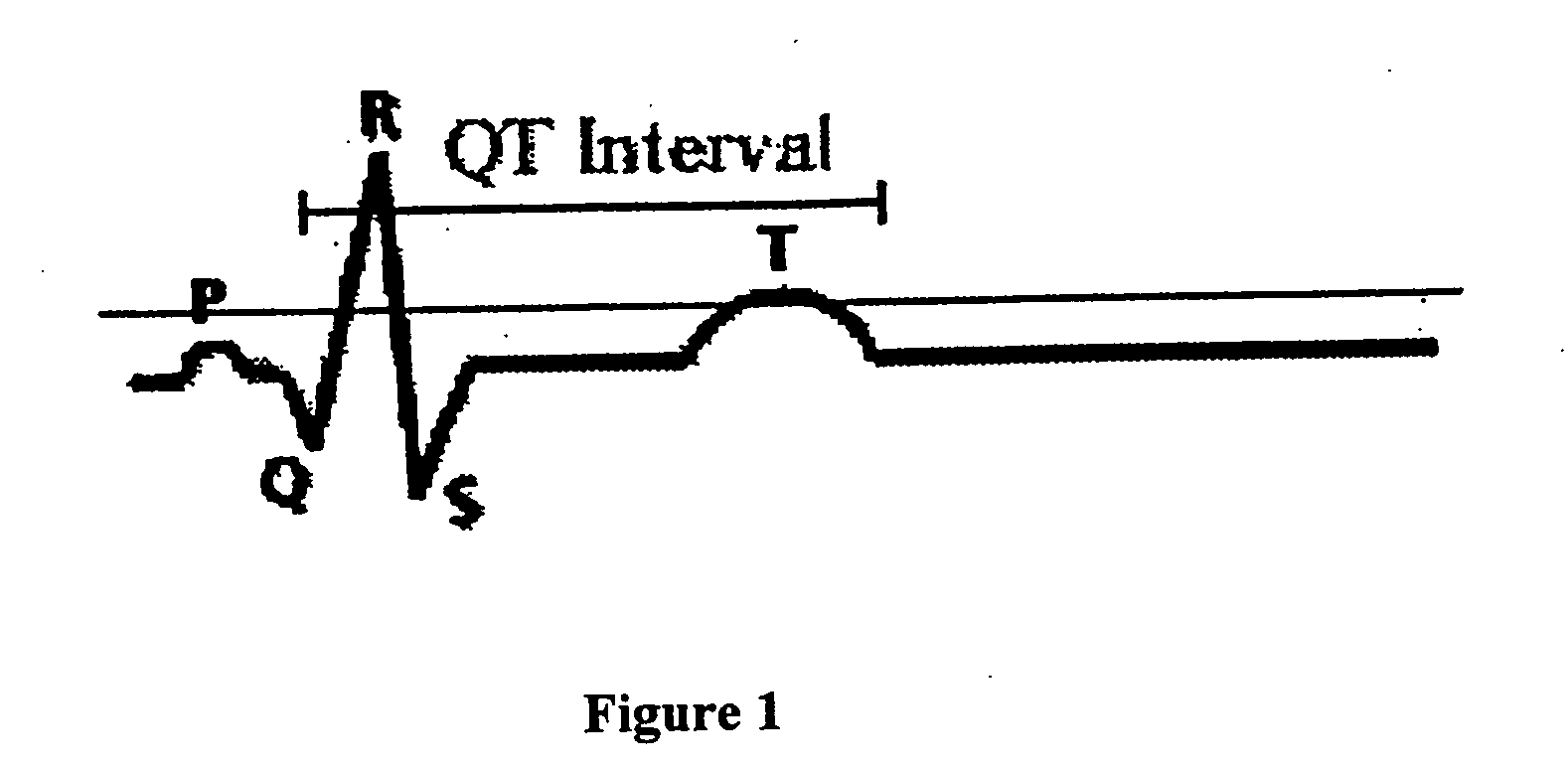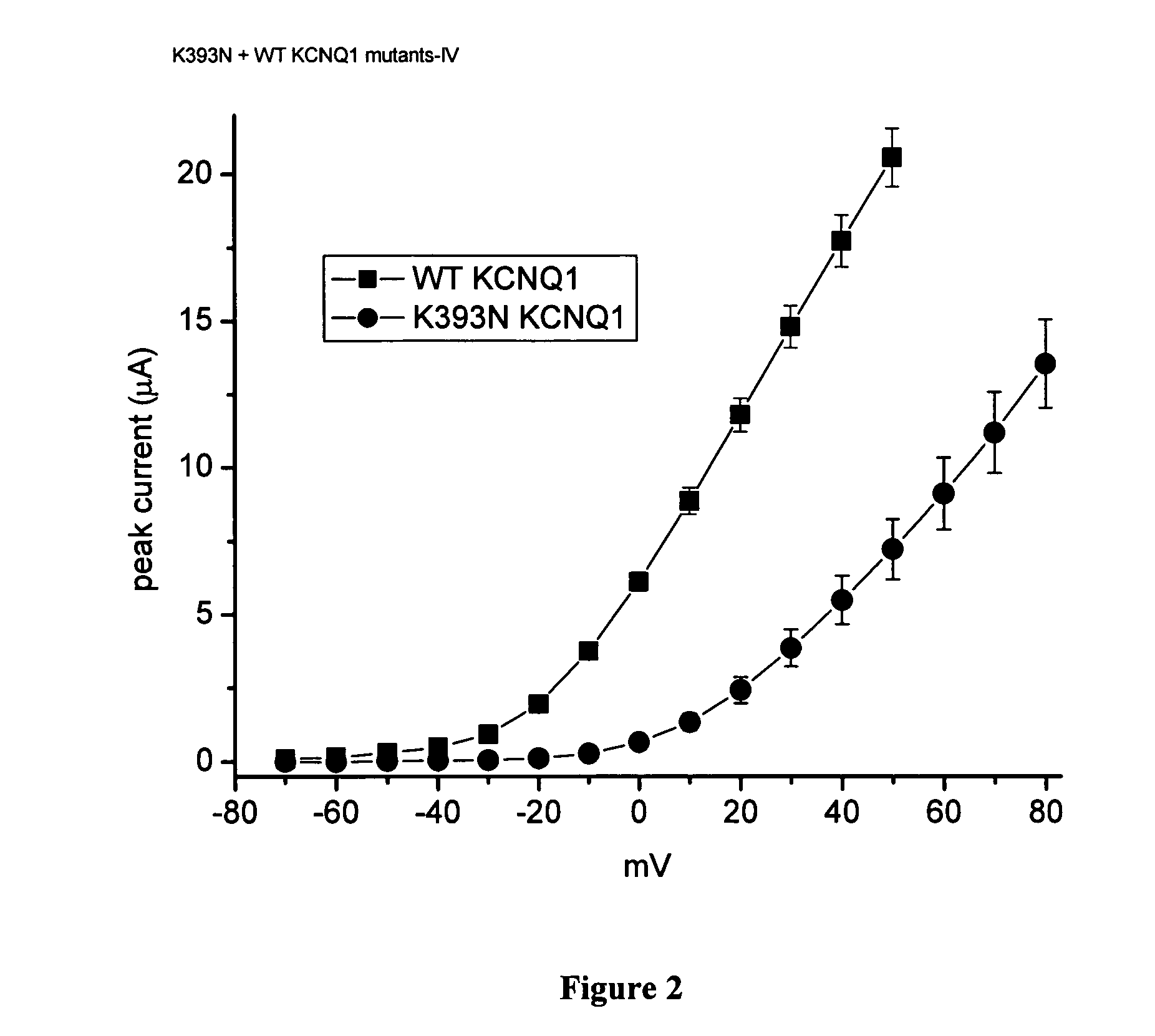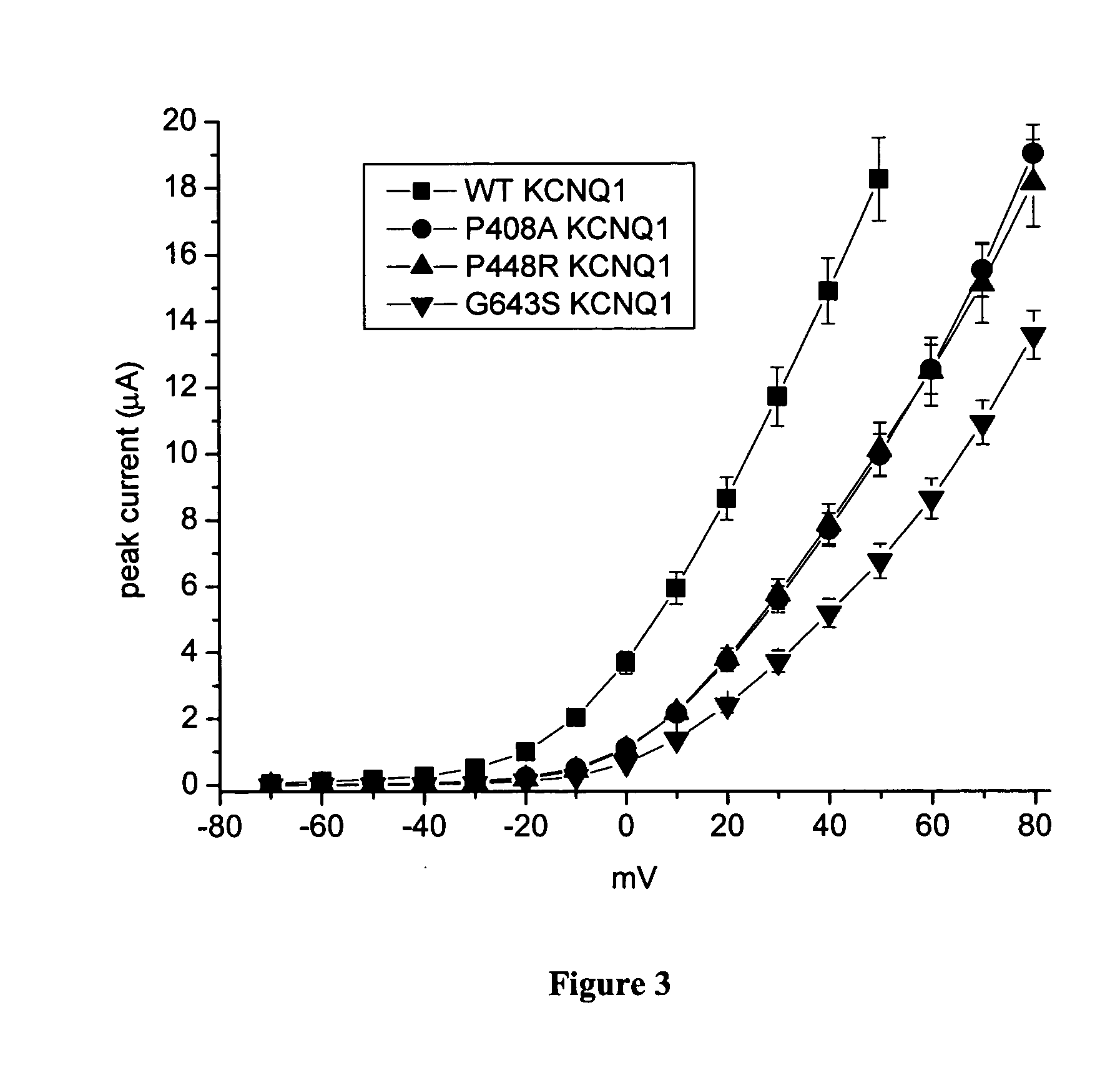Polymorphisms associated with ion-channel disease
- Summary
- Abstract
- Description
- Claims
- Application Information
AI Technical Summary
Benefits of technology
Problems solved by technology
Method used
Image
Examples
example 1
[0107] This example demonstrates the current-voltage relationships established for the transfected oocytes. Current-voltage (I-V) relationships were determined and are shown in (FIGS. 2, 3, 6 and 9). This is a measure of current amplitude as a function of test voltage. Currents were measured using 5 sec pulses to potentials ranging from −70 to +50 mV for wildtype channels and −70 to +80 mV for variant channels (to account for shift in gating explained below). K393N KCNQ1 has its own set of controls because this variant was evaluated in a second batch of oocytes. KCNQ1 mutations cause a rightward shift in the I-V relations. Current magnitudes were reduced by more than 50% at any given potential (FIG. 10). The D85N KCNE1 mutation caused a similar, but less dramatic shift in the voltage dependence of current activation, and the T125M KCNE1 variant had no affect (FIG. 5). A G643S KCNQ1 / D85 N KCNE1 double mutant reduced current to almost zero indicating that the two mutations act synergi...
example 2
[0108] This example demonstrates the activation rate relationships established for the transfected oocytes. Activation rates (FIGS. 4 and 7) were determined by plotting time constants (tau) for activation vs test potential. Time constants describing ion channel kinetic properties are calculated by fitting curves generated from an IV determination. Hille, Ionic Channels in Excitable Membranes. 2nd ed. Sinauer Associates, Sunderland, Mass., p. 607 (1992). This is a measure of how fast channels open from the closed state. A slower time constant would decrease repolarizing current during an action potential. All mutants except T125M KCNE1 slowed the rate of activation.
example 3
[0109] This example demonstrates the deactivation rate relationships established for the transfected oocytes. Deactivation rates (FIGS. 5 and 8) were determined by plotting time constants (tau) for deactivation vs test potential. This is a measure of how fast channels close from an open state. A faster time constant would cause a decrease in current. Deactivation was unchanged for all mutants tested except D85N in which deactivation was reduced. Therefore reduced current through the potassium ion channel due to the mutations in KCNQ1 and KCNE1 is due to slower activation during an action potential.
[0110] The results obtained by the methods described in all three examples demonstrate that the variant forms of KCNQ1 and KCNE1 of the present invention have functional effects in reducing net outward repolarizing currents in the potassium channel encoded by these genes. Therefore, the variant forms are correlated with the presence of ion channel disease or susceptibility thereto.
PUM
 Login to View More
Login to View More Abstract
Description
Claims
Application Information
 Login to View More
Login to View More - Generate Ideas
- Intellectual Property
- Life Sciences
- Materials
- Tech Scout
- Unparalleled Data Quality
- Higher Quality Content
- 60% Fewer Hallucinations
Browse by: Latest US Patents, China's latest patents, Technical Efficacy Thesaurus, Application Domain, Technology Topic, Popular Technical Reports.
© 2025 PatSnap. All rights reserved.Legal|Privacy policy|Modern Slavery Act Transparency Statement|Sitemap|About US| Contact US: help@patsnap.com



